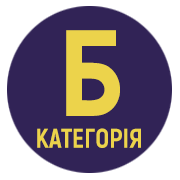THE FORMATION OF PROFESSIONAL MOTIVATION FOR LEARNING AS A FACTOR IN THE ACTIVATION OF STUDENTS’ CREATIVE ACTIVITY
Abstract
The article reveals the forms and methods of independent work of students, which are aimed at forming professional motivation by improving the performance skills of playing the piano, namely: by means of reading from a letter and a sketch method of working on musical works, which are considered in the aspect of the initial stage of education. The formation of professional competencies of a specialist in any field of training is the main task of educational programs. Against the background of the reform of the higher school, the search for new, progressive methods of learning in the field of music education, based on the methodology of the humanistic paradigm, person-oriented learning, aimed at the development of the student’s abilities and the activation of his creative activity. As experience shows, achieving a positive result in improving piano playing skills is possible only under the condition of learning motivation. In our opinion, the introduction of such forms of work as reading sheet music and sketch study of works into the program of the “Piano” course will contribute to its formation. It should be noted that among the students there are those who do not have sufficient pre-university training to play an instrument. This is due to the requirements for admission to some specializations. Working with such students requires specific approaches in teaching methods and appropriate motivation. This is the first aspect of the problem. The second – consists in the structure of the educational programs of the disciplines themselves. We have repeatedly emphasized that the number of classroom hours devoted to the study of one or another discipline is 1/3 of their total number, and 2/3 is the student’s independent work under the guidance of the teacher. The effective use of this time, that is, the correct content, forms of work, control methods, repertoire, etc., is aimed at improving performance skills and, at the same time, activating the student’s creative activity.
References
Нейгауз Г. (1987). Про мистецтво фортепіанної гри. М., 240 с.
Падалка Г. (2008). Педагогіка мистецтва (Теорія і методика викладання мистецьких дисциплін). Київ: Освіта України. 274 с.
Ципін Г. (1984). Навчання грі на фортепіано. М., 176 с.





